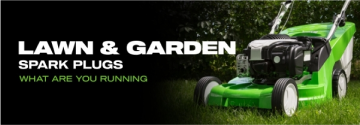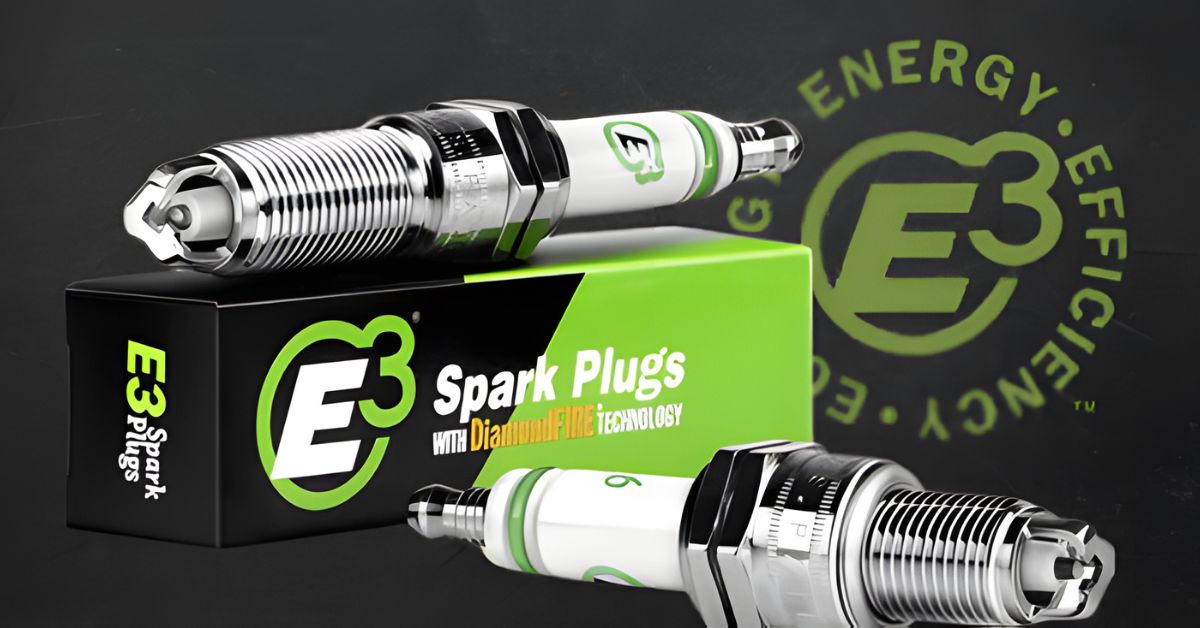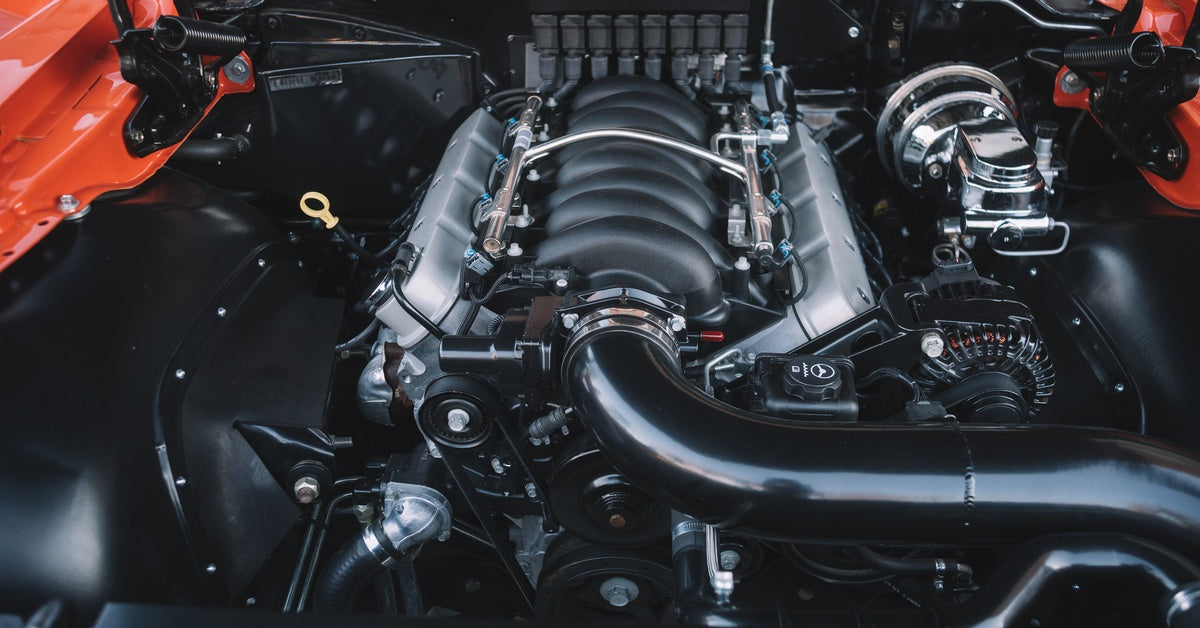
Spark plugs are integral to your truck's engine combustion process. For trucks that cover high mileage every year, wear and tear is inevitable. Ignoring spark plug issues can lead to diminished performance, poor fuel efficiency, and even expensive engine repairs. Staying mindful of these 10 common spark plug problems can help keep your truck operating at its best.
1. Worn-Out Spark Plugs
After thousands of miles, consistent exposure to intense heat and combustion leads to spark plug electrode erosion. Their ability to generate a spark weakens as a result.
Symptoms:
- Decreased fuel efficiency
- Engine misfires
- Difficulty starting the engine
This issue often arises from prolonged use without replacements. To resolve this, it’s important to replace your spark plugs as soon as they reach the manufacturer's recommended mileage. Choose high-quality options, such as E3 Spark Plugs, to extend the life of your truck's engine.
2. Fouled Spark Plugs
Fouled spark plugs occur when deposits—oil, fuel, or carbon—build up on the plug tip, interfering with the spark. Trucks operating in stop and go conditions often face this problem.
Symptoms:
- Erratic idling
- Sluggish acceleration
- Engine misfires
Potential causes include engine oil leaks, running a fuel-rich mixture, or prolonged idling. To resolve the problem, start by inspecting and replacing any fouled spark plugs. It's also essential to address the underlying cause of the deposits, such as repairing oil leaks or adjusting the air-fuel mixture for proper engine performance.
3. Incorrect Spark Plug Gap

The gap between the electrodes on spark plugs contributes to proper ignition. If the gap is too narrow or too wide, performance suffers.
Symptoms:
- Frequent misfires
- Weak sparks
- Inefficient combustion
This issue can occur because of improper installation or prolonged wear. You can use a feeler gauge to measure and adjust the gap as needed. Alternatively, choosing pre-gapped spark plugs can save time and prevent errors.
4. Cracked Ceramic Insulator
The ceramic insulator on a spark plug is designed to protect the metal conductor and improve heat resistance. A cracked insulator can allow electrical charge to bypass the plug, leading to poor ignition.
Symptoms:
- Engine misfires
- Reduced engine performance under load
Damage to spark plugs can occur due to improper handling during installation or temperature fluctuations in the engine. Spark plugs with cracked insulators should be replaced immediately to avoid engine damage. It is also important to handle plugs carefully during installation to prevent cracking.
5. Overheating Spark Plugs
Spark plugs exposed to excessive heat may form blisters and gather whitish residue on the electrodes.
Symptoms:
- Blistered electrodes
- Reduced spark strength
Common causes include a lean air-fuel mixture, problems with the cooling system, or the use of spark plugs that are not suited to your engine’s heat range. You should check and adjust your truck’s air-fuel ratio, as well as evaluate the cooling system. If your engine often runs hot, consider heat-resistant spark plugs to prevent further issues.
6. Spark Plug Thread Damage
Spark plug threads can get damaged after long periods of use or through improper installation techniques like cross-threading or overtightening.
Symptoms:
- Difficulty removing or installing plugs
- Loss of compression
Mishandling during installation is the most common cause of this issue. To address it, use a thread chaser tool to clean the threads or consult a professional mechanic if the damage is severe. To prevent future problems, always apply the correct torque when installing or replacing truck spark plugs.
7. A Flashover in Combustion
Flashover happens when the spark’s electrical charge travels along the outside of the spark plug instead of through it, leading to ignition failure or weaker performance.
Symptoms:
- Engine hesitation
- Misfires during acceleration
Flashover is often caused by dirt or damage to the spark plug's insulator. Clean and carefully inspect spark plugs for any insulator damage. For a more reliable solution, we recommend replacing your plugs with our high-quality options here at E3 Spark Plugs.
8. Rusted or Seized Spark Plugs
Over time, spark plugs can become stuck due to rust or corrosion, making maintenance and replacement more challenging.
Symptoms:
- Resistance or difficulty during removal
- Risk of thread damage during replacement
Prolonged use, exposure to high humidity, and neglecting regular replacement schedules can lead to rust and seizing. It’s important to prepare threads with an anti-seize compound when installing new plugs. For older or rusted plugs, using penetrating oil can help ease their removal.
9. Pre-Ignition Damage

Pre-ignition occurs when the air-fuel mixture ignites prematurely, often causing damage to the spark plug.
Symptoms:
- Pinging or knocking sounds from the engine
- Poor performance
Incorrect ignition timing or using the wrong type of spark plug can lead to this. Address carbon deposits in the combustion chamber and correct any engine timing issues.
10. Use of Incorrect Spark Plugs
Using the wrong spark plugs for your truck—or substandard ones—can wreak havoc on your vehicle’s performance.
Symptoms:
- Rough idling
- Frequent misfires
- Reduced fuel economy
Using the wrong size, heat range, or materials can cause your truck's spark plugs to malfunction. Check that your spark plugs match your vehicle model's manufacturer specifications. Choose high-performance options like ours at E3 Spark Plugs to improve engine efficiency.
Safety Considerations and Dangers of Neglected Spark Plugs
Neglecting spark plug maintenance can lead to serious safety hazards. Faulty spark plugs can cause misfires, which lead to stalled engines at intersections. Similarly, poor ignition timing can reduce engine performance, making acceleration sluggish and posing risks when merging into traffic.
Another concern is increased fuel consumption, which may cause unexpected fuel shortages during long trips. Moreover, spark plug misfires can raise the temperature inside the combustion chamber, increasing the likelihood of engine overheating. This can lead to mechanical failures, such as cracked engine components, or in extreme cases, even vehicle fires.
To prevent these risks, inspect and replace your spark plugs as needed. Additionally, always follow the manufacturer's guidelines for torque specifications. Avoid using low-quality or incompatible spark plugs.
Consistent maintenance is not only for performance, but also for ensuring the safety of the driver, cargo, and other road users.
Keep Your Truck Roadworthy With Proper Spark Plug Maintenance
A high-mileage truck already has the odds stacked against it in terms of wear and tear, so regular spark plug maintenance is essential. From replacing worn out plugs to avoiding mismatching, proactive steps ensure optimal performance and fuel economy.
If you’re after plugs that deliver long-lasting and more consistent performance, we’ve got you covered at E3 Spark Plugs. Our design and materials are built to handle the demands of high-mileage trucking, keeping you going mile after mile.
By staying ahead of 10 common spark plug problems in high-mileage trucks, you not only protect your engine but also your safety. Inspect regularly, replace when necessary, and always choose quality parts to keep your ride reliable and efficient.







